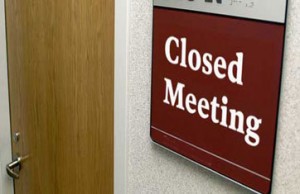Transit Riders in the Boardroom
 Transit riders have felt a persisting disconnection from the decision-making bodies of their transit systems and the needs of the riding public. While Albany and Washington have undoubtedly dealt transit providers a bad hand through insufficient funding, transit authorities are left playing without a full deck since Albany has not empowered riders with full voting seats on their boards. Riders must have a seat at the table in the decision-making process in order to ensure accountability and efficiency. Filling this gap in perspective will help boards understand more clearly how their decisions impact the riding public, and encourage the efficient use of resources to best meet the needs of transit riders.
Transit riders have felt a persisting disconnection from the decision-making bodies of their transit systems and the needs of the riding public. While Albany and Washington have undoubtedly dealt transit providers a bad hand through insufficient funding, transit authorities are left playing without a full deck since Albany has not empowered riders with full voting seats on their boards. Riders must have a seat at the table in the decision-making process in order to ensure accountability and efficiency. Filling this gap in perspective will help boards understand more clearly how their decisions impact the riding public, and encourage the efficient use of resources to best meet the needs of transit riders.
When riders try to influence how the systems run through limited public comment periods, they feel like their grievances fall on deaf ears. The problem stems from the fact that riders do not have a meaningful voice in the decision-making of our transit systems. The political leaders who appoint members to transit authority boards have left riders behind by disproportionately selecting people for their business and management acumen, rather than their experience as users of public transportation. While the expertise the current board members bring to the table is necessary, the composition is inherently unbalanced without the representation of the users of those systems. Currently, upstate transit authorities have no seat for transit riders on their boards, and labor only recently garnered a non-voting seat. While the MTA does have a seat for a “regular mass transit user,” that seat has no voting power, and arguably represents riders in name only.

The primary purpose of a public transit authority is to serve the needs of transit riders. Therefore, it is profoundly troubling that the decision-making bodies of these authorities do not include the voices of the people who have a stake in the system. A rider’s perspective, grounded in the daily use and dependence on the reliable functioning of public transit for their livelihoods, must be included in the decision-making body of those systems – with voting power to enact change. The path to justice starts by having a seat at the table.

